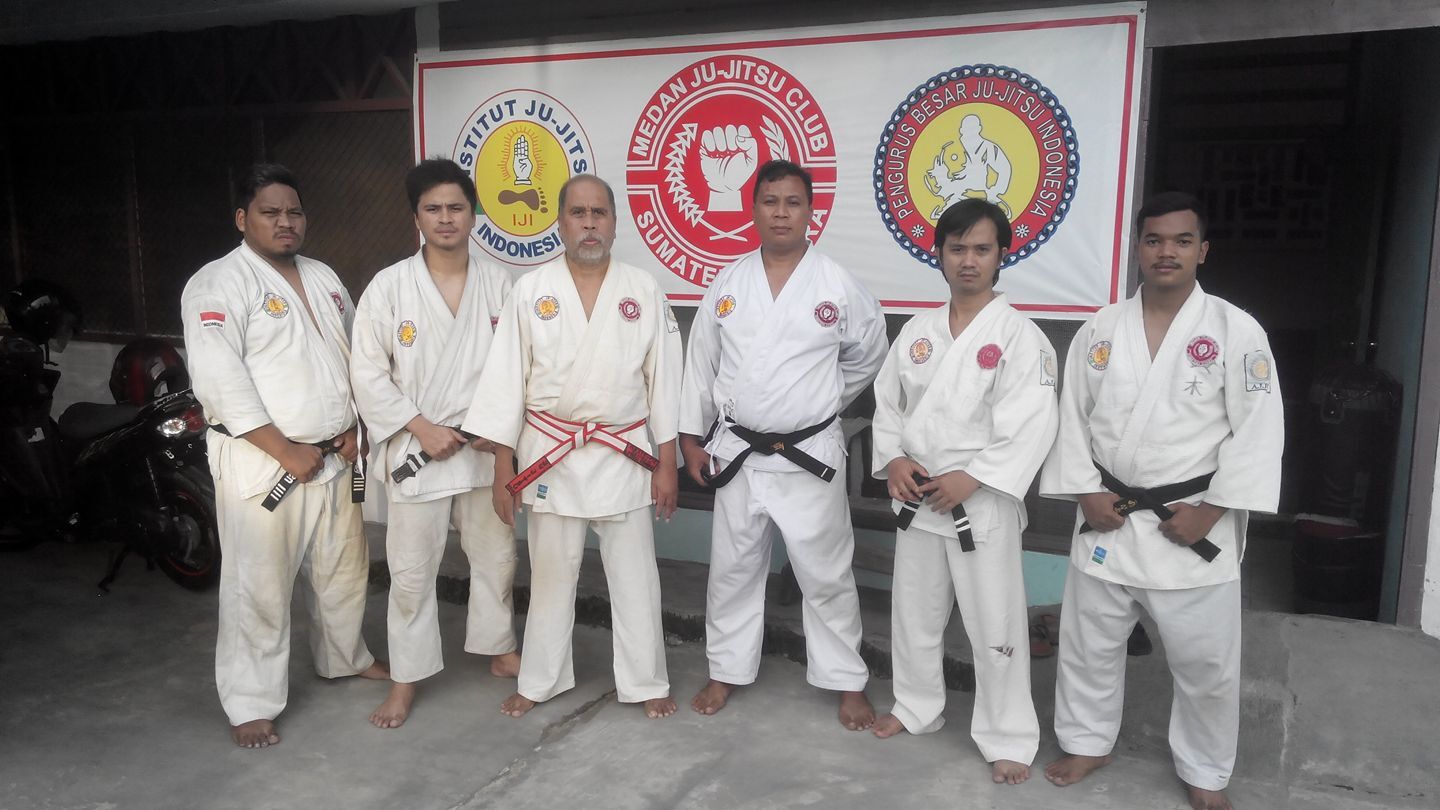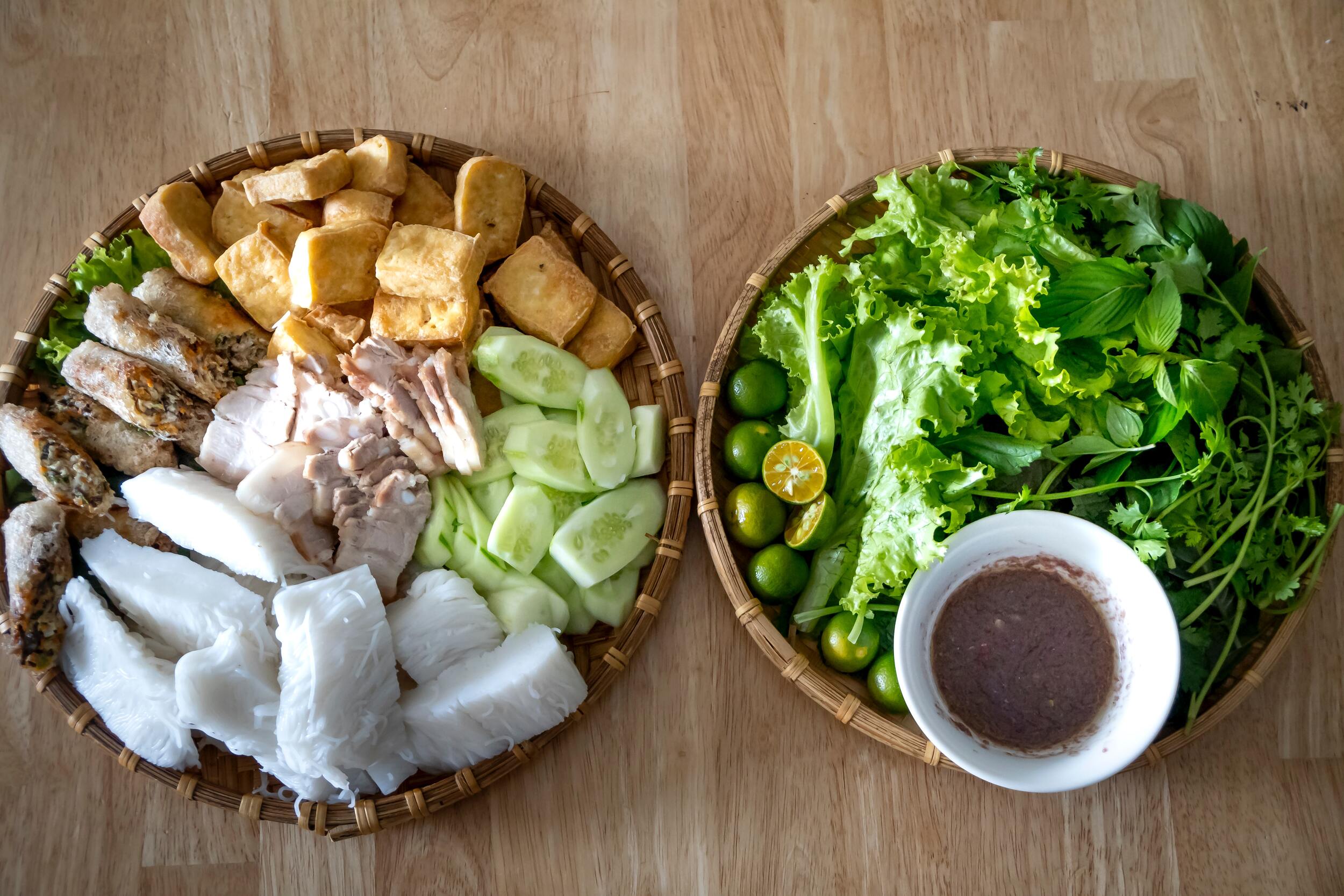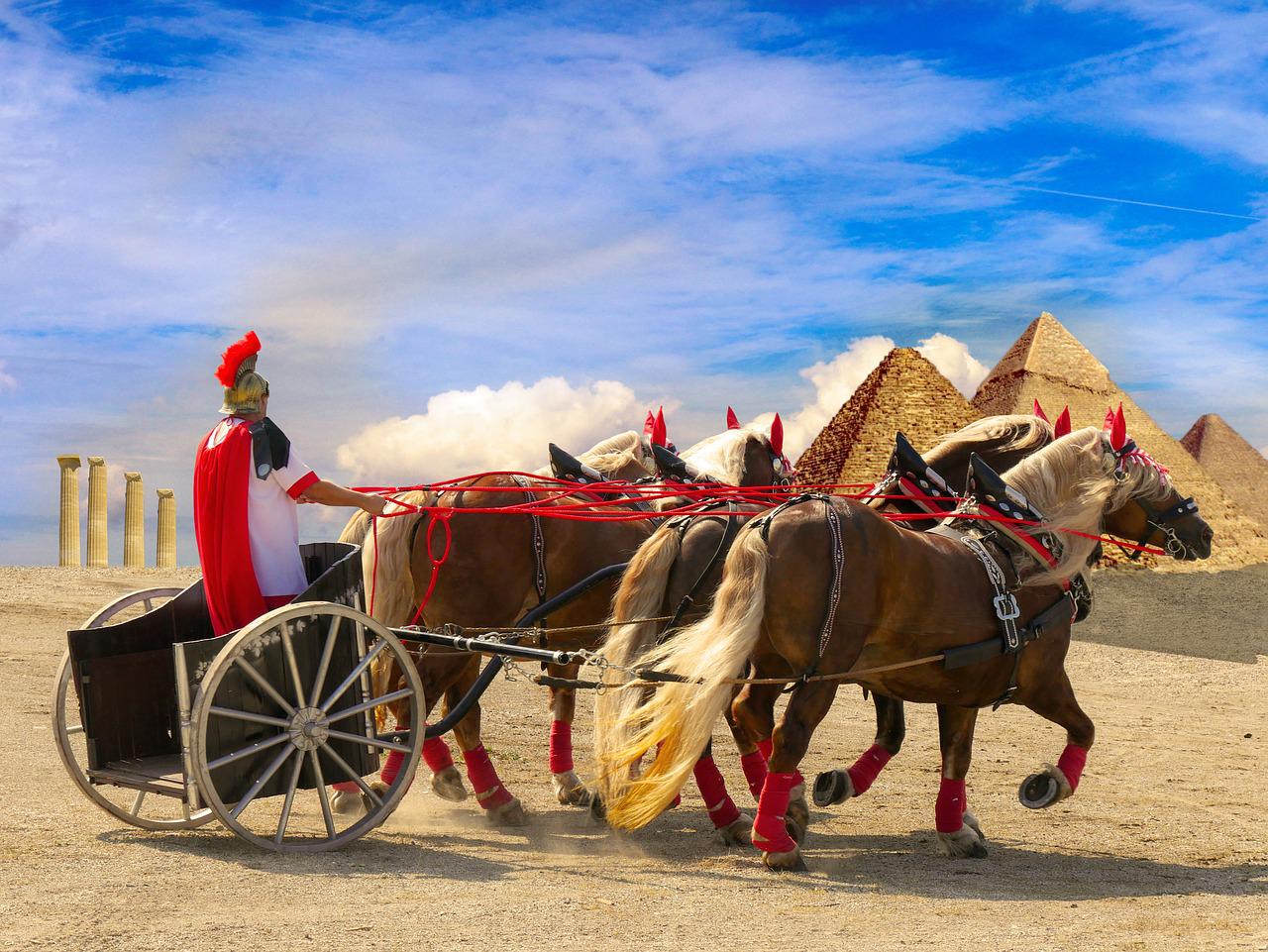The Story Of The Medan Jujitsu Club Of Indonesia
Medan Ju-jitsu Club (MJC) was established on April 4, 1970, by JULIUS ADE TITALEY. J. Titaley first practiced Ju-jitsu in 1938 in the city of Tebing Tinggi, his coach was named TOSHIO KITADA. In developing MJC, J.Titaley collaborated with JU-JITSU FEDERATION AUSTRALIA (JFA) based in Sydney Australia with Professor BRUCE WATT DAN VII. And in 1980 the Medan Ju-jitsu Club was appointed as a branch of the Australian Ju-jitsu Federation (JFA).
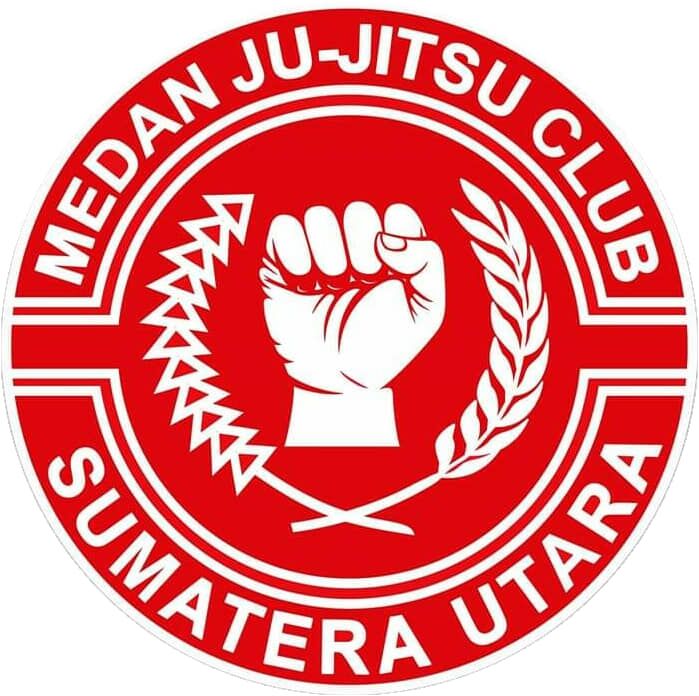
But the relationship did not run smoothly since the professor of MJC, Mr. J. Titaley died in 1982, so since then MJC has been held directly by RONALD TITALEY (son of J. Titaley). Until the end of 1987, MJC decided to cooperate with Ju-jitsu in Jakarta, considering that it was easier to communicate than to Australia. And since the end of 1987, MJC joined the INSTITUT JU-JITSU INDONESIA (I J I) which was coordinated by the Police Science College (PTIK). Since then, MJC was appointed as Pengda IJI of North Sumatra.
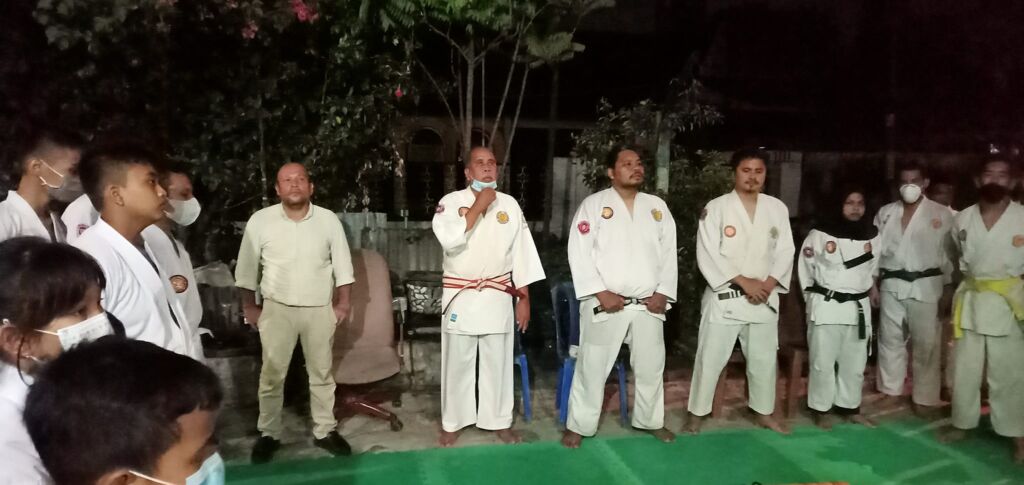
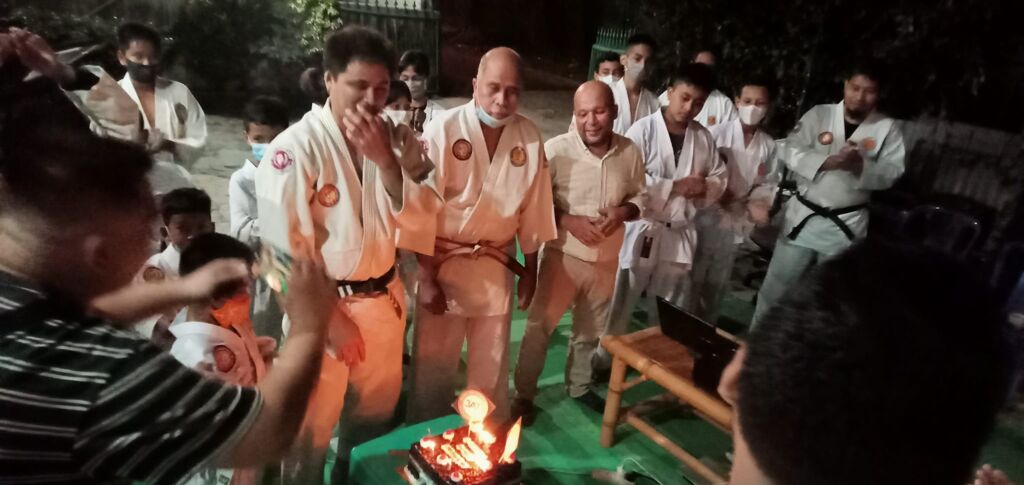
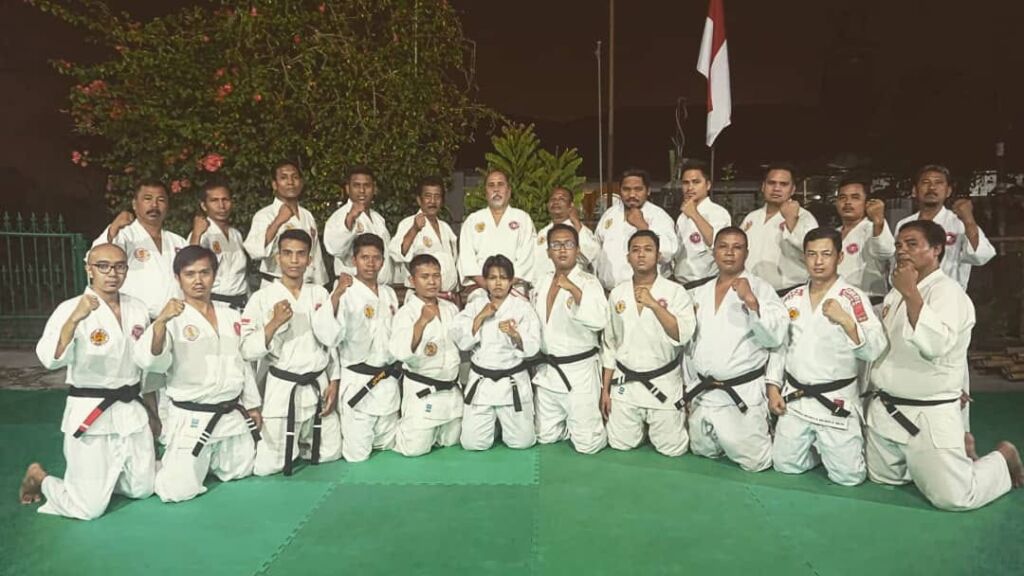
Medan Jujitsu club field flow is Kito Ryu. We still maintain traditional jujitsu techniques as well as new techniques. There are times when the old techniques can complement the new ones, and some old techniques are so good they last forever.
Throw/Down Technique = Nage-Waza
Lock Technique = Kansetsu-Waza (Katame-Waza)
Foot/Kick Technique = Ashi-Waza
Hand/Punch Technique = Te –Waza
The Nage-Waza technique is divided into 2 parts according to attitude and how to do it, namely:
1. Tachi – Waza = Kick technique in standing posture
2. Sutemi – Waza = Technique of kicking in the attitude of feeling
Kansetsu-Waza (Katame-Waza) technique is divided into 3 parts:
1. Osae – Waza = Lockdown technique (pressing) after the opponent is in a down position (supine)
2. Shime – Waza = Technique of locking the opponent’s body or neck with a balance of hands or feet.
3. Ude – Gatame = Locking technique with the attacker’s elbow in a straight line.
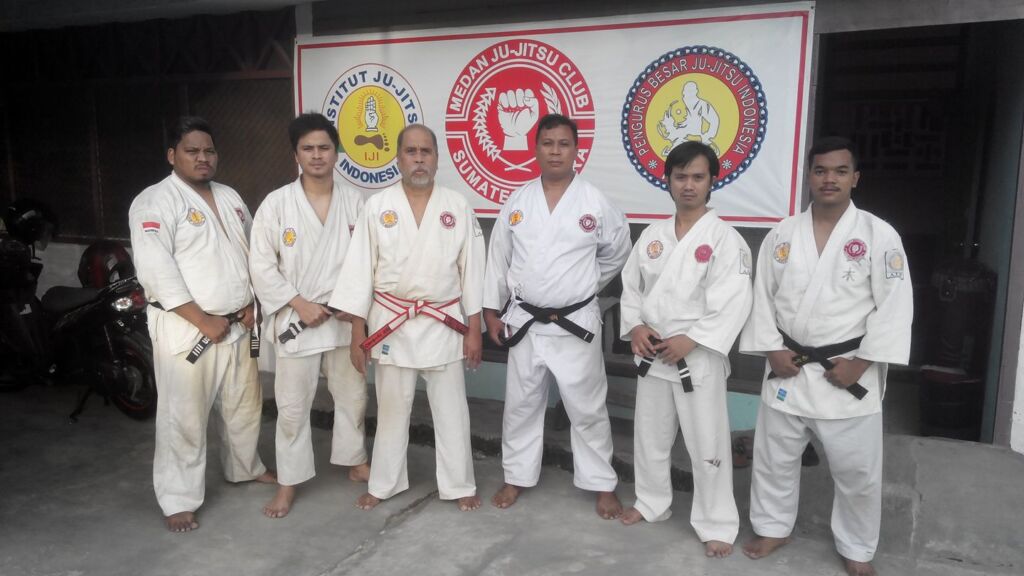
We learn Ju-jitsu must pay attention to the Basics and Core contained in Ju-jitsu so that a Ju-jitsu can use Ju-jitsu martial arts perfectly and well.
Ju-jitsu basics:
1. take advantage of the opponent’s power as well as possible.
2. Pay attention to the opponent’s weak areas.
3. Solve the opponent’s weight.
4. Distract the opponent’s concentration.
5. make a decisive attack.
The essence of Ju-jitsu Ju-jitsu is the coordination of:
1. Concentration.
2. Breathing.
3. Serenity.
4. Speed.
5. Movement
Jujitsu is a martial art that originated in Japan and is known for its practicality in self-defense situations. It is a grappling-based martial art that utilizes throws, joint locks, and chokes to subdue an opponent. Jujitsu is an effective self-defense system that is suitable for people of all ages and genders.
When fighting on the street, where the attacker is often bigger and stronger than the defender, jujitsu is especially useful. When fighting on the street, where the attacker is often bigger and stronger than the defender, jujitsu is especially useful. Jujitsu teaches its practitioners to use their opponent’s strength and weight against them. By using throws, joint locks, and chokes, a smaller and weaker person can quickly neutralize a larger and stronger attacker.
Jujitsu is an excellent form of self-defense for women. Women are often targeted in violent attacks, and jujitsu can help them defend themselves. The techniques in jujitsu are made to work well no matter how big or strong the opponent is. Jujitsu also teaches women how to defend themselves against common attacks such as grabs, chokes, and bear hugs.
Jujitsu is also an effective self-defense system for older adults. As we age, our bodies become less able to withstand the impact of a physical altercation. Jujitsu’s focus on technique and leverage over brute strength makes it an ideal martial art for older adults. Jujitsu techniques can be changed to fit the physical abilities of the person doing them. This makes it possible for people of all ages to learn it.
Jujitsu can be challenging to learn, but with dedication and practice, anyone can become proficient in the art. Jujitsu requires a lot of physical conditioning, which can be challenging for some people. However, the rewards of training in jujitsu are well worth the effort. The sense of accomplishment that comes with mastering a difficult technique is unparalleled.
Jujitsu is an excellent martial art for self-defense and street fighting. It is suitable for people of all ages and genders and can be modified to suit the physical abilities of the practitioner. While it may be challenging to learn, the rewards of training in jujitsu are well worth the effort. If you are looking to learn a practical and effective self-defense system, then jujitsu may be the martial art for you.
